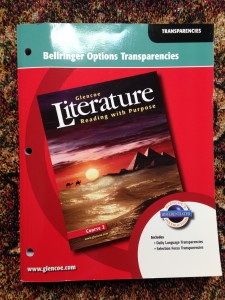Page One of the Holiday Letter:
December, 2015— Greetings from the Starbase!

Discerning readers will realize that the map in Star Wars: The Force Awakens leads directly to Earth. Syllogistically speaking, if Ms. Q is even now drinking tea with Luke, and Ms. Q is on Earth, then Luke must be on Earth also. They expect to have their hands full shortly. The Full Moon falls on Christmas this year, and recent resurgences in local werewolf populations can only be cause for grave concern. Combined with the naturally greater vampire threat that occurs due to long December nights, Ms. Q thinks this letter may have to be dedicated to preventative measures designed to protect our readers.
Luke naturally objects, noting that the long history of discrimination against vampires and werewolves has never been justified by events, but may be simply more fall-out from sensationalistic media coverage. How many actual humans have been sucked dry or past the point of no return by vampires? How many dismembered and partially eaten corpses can truly be blamed on werewolves? A careful google search on “How many people were killed by werewolves in 2015” turns up not a single name, although admittedly Luke and Ms. Q did not go through all 2,470,000 search results. The same search for vampires shows no deaths in the recent past. As Luke observes, if you can’t trust Google, who can you trust? So, taking our cues from a front-running presidential candidate, should we require them to be registered? Should we build tall fences around our cemeteries and demand that Hungary pay for them? Some of our werewolves and most of our chupacabras come from Mexico. Can we add werewolf and chupacabra defense systems to the tab we present to Mexico for our spiffy, giant, new fence? What will we do if these creatures do not come in? The humane deportation of vampires can only be done at night. We doubtless do not have the necessary personnel. If the FBI does not have an X-Files unit, they will need one now.
“Trust no on,” Ms. Q mutters. She still remembers the X-Files, which is returning, and none too soon. How many households are stocking silver bullets in high-volume clips? How many average folk can whittle a stake?
Luke sighs. That kind of thinking has led to our problem, he points out. Whether born or made, in his view, the ACLU is overdue at getting involved in the fight against the racial profiling of preternatural creatures that has led countless vampires, werewolves and others to live in fear, casting entire communities as suspect simply because of what they look like and where they come from. Civil rights legislation to protect the rights of these individuals seems overdue. Perhaps Ms. Q could write a letter to her representatives in Congress?
She agrees to write the letter. She adds her first piece of advice to this letter and post. Readers, remember: You never can tell when an insanity defense will come in handy. Especially around the holidays, we often need some excuse for our doings.
Eduhonesty: Sincerest wishes for a Merry Christmas, Happy Hanukah, Happy New Year or whatever your personal holiday from Ms. Q to everyone on Earth or in Cyberspace, including the vampires, werewolves, (vegetarian) chupacabras, etc. Peace and Happiness to everyone on Earth’s outer colonies, and to all alien life forms reading this letter. We wish each and every one of you a Wonderful New Year without regard to when your New Year starts or how long it takes your planet to circle the sun. If your planet does not celebrate holidays, we hope you will nonetheless accept our desire for your continued health and happiness. May the joys of this time brighten your days.
Peace and Happiness and a Blessed Year to all.







